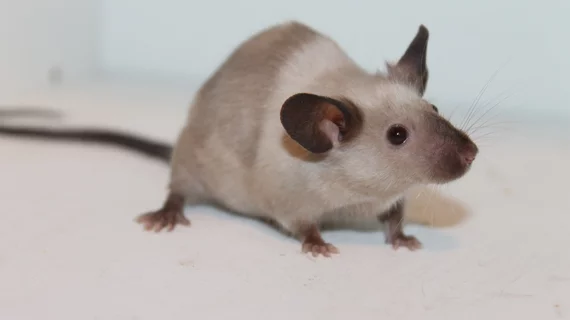Harvard Medical School scientists have created a wirelessly programmed, miniaturized pacemaker which functions for weeks to months at a time, opening the door to “previously impossible investigations of arrhythmia and heart failure in the mouse.”
Other attempts to create a fully implantable pacemaker for mice topped out at one week of pacing duration, the researchers wrote in Circulation Research, due to limited battery power and other device restrictions.
But this pacemaker—which is 26 mm by 6.7 mm and weighs just 1.78 grams—was equipped with a highly efficient, miniaturized battery that enabled the researchers to test high-rate ventricular and atrial pacing for four consecutive weeks. None of the batteries failed during those tests, suggesting the potential for even longer studies.
“Mouse models of cardiac arrhythmia, heart failure and cardiac pacing are critical to uncovering underlying mechanisms of disease and to understanding the susceptibility of various genetic manipulations to arrhythmia,” wrote lead author Maarten Hulsmans, PhD, and colleagues. “Mice allow complex genetic manipulation, disease modeling and molecular investigations that are difficult if not impossible to replicate in larger animals. In addition, experiments can be done at lower cost and higher throughput.”
Despite these potential advantages, there have been no long-term studies of pacing strategies in mice due to technical limitations—until this report.
Hulsman et al. implanted the mini devices in 39 mice and programmed the pacemakers to test the feasibility of three different types of studies. First, they showed the pacemaker’s ability to treat third-degree atrioventricular block following macrophage depletion.
Then, they used chronic ventricular pacing over four weeks to increase heart rates from an average of 313 to 550 beats per minute, noting the tachypacing strategy reduced left ventricular function—a phenomenon known as pacing-induced cardiomyopathy. They also performed rapid pacing of the mice’s atria for four weeks and found that while it didn’t reduce ventricular function, the mice subjected to overdrive pacing were more predisposed to inducible atrial fibrillation.
“Here we have taken advantage of a recently introduced clinical-grade miniaturized pacemaker to develop a new implant for mice that is well-tolerated, programmable, and capable of continuous epicardial pacing over weeks to months,” the researchers wrote. “Furthermore, we have optimized a surgical procedure to ensure reliable functioning of the implant for reproducible long-term studies. These advances provide access to long-term pacing in mice, a tool that was previously not available even in laboratories with substantial engineering expertise.”

